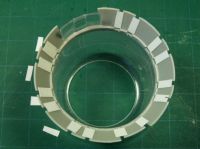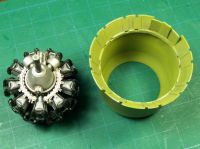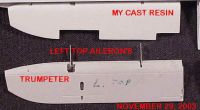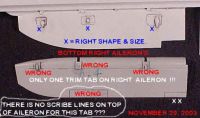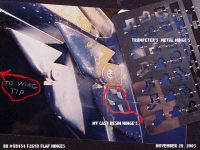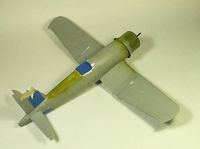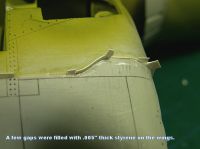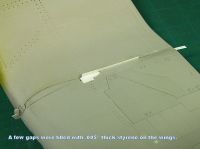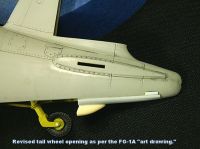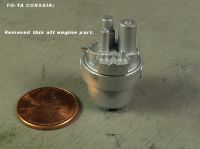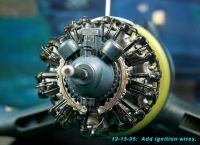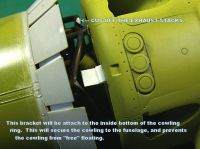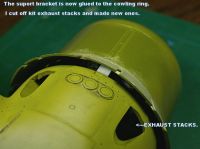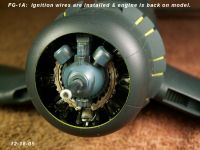The Second FG-1A Corsair, Part Two
By Rodney Williams
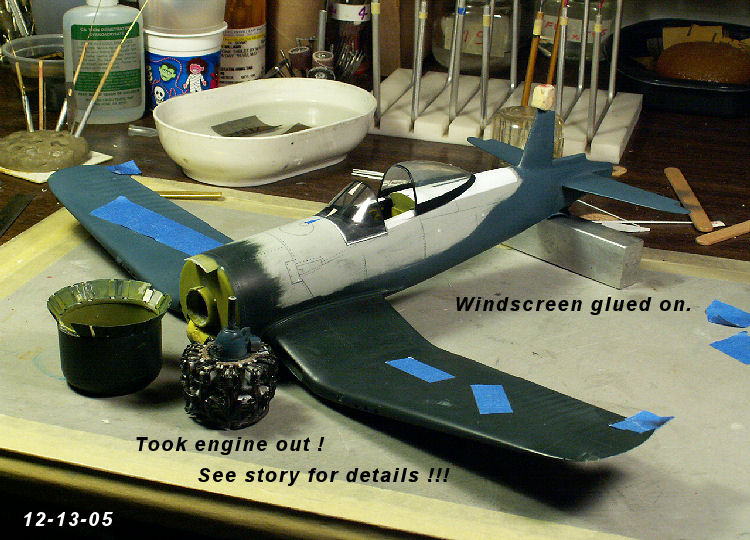
Continue with the Model’s Construction
As you recall in Part One I had reworked the cowl flaps and glued the engine onto the firewall. The revised cowl flaps were attached to a retainer ring that was supplied in the kit and the ring was attached to the aft side of the clear plastic cowling.
I started to “dry-fit” the cowling over the engine and to my surprise it got stuck on the first row of cylinders so I had to carefully grind off some plastic with my portable Dremel Motor Tool. With a bit of grinding on the inside of the cowling it fit over both rows of cylinders. I painted the inside of the cowling with Tamiya XF-4 “yellow-green” paint.
I added a bracket to the lower front section of the firewall, which gave me an attachment point for the bottom of the cowling. As I was about to attach the cowling I noticed that I had never spruced up the engine with ignition wires and spark plugs, so I took out the engine and added all these items. I left the “aft” section of the engine off, as once the wings are on the fuselage you can’t see this part of the engine. I have no idea why Trumpeter made the part in the first place unless you just want to build the engine by itself.
I assembled the wings OK but as usual there were a few gaps here and there to fill up with card stock and super glue. The kit flaps and especially the two ailerons were not right so I used a spare set of my ailerons and flaps that I had cast from my “F2G Corsair Masters”, including a set of my flap hinges. Trumpeter’s “PE” hinges were crap. Here are 4 photos showing the ailerons, flaps and hinges.
Sometime during the building process I built in the recessed area behind the tail wheel opening and added the curved flaring to the lower fuselage.
That’s about it for Part Two, so let the photos tell the story.
Part One | Part Two | Part Three
Enjoy, Rodney
© Rodney Williams 2013
This article was published on Friday, June 14 2013; Last modified on Wednesday, June 19 2013


